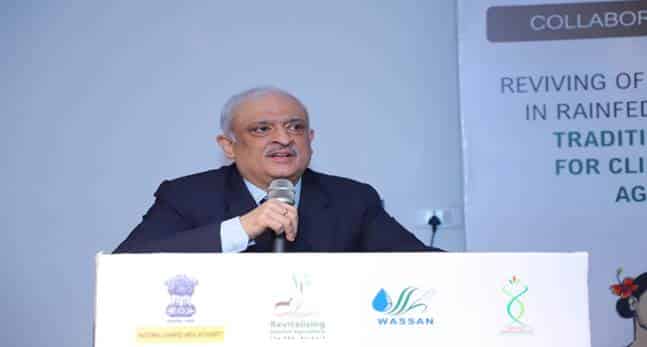Reviving Traditional Varieties for Sustainable Agriculture

The importance of traditional agricultural varieties is gaining recognition in India, especially in the context of climate change and food security. Recently, a Multi-Stakeholder Convention titled “Reviving Agro-Biodiversity in Rainfed Areas through Traditional Varieties for Climate-Resilient Agriculture” was held in New Delhi. The event brought together experts, farmers, and policymakers to discuss the significance of traditional varieties in sustaining agriculture, particularly in rainfed areas. Dr. Devesh Chaturvedi, Union Secretary of the Ministry of Agriculture & Farmers’ Welfare, emphasized the need to promote these varieties through various government schemes. This article explores the key discussions and insights from the convention.
The Need for Traditional Varieties
Dr. Devesh Chaturvedi highlighted the unique traits of traditional agricultural varieties. These include better taste, aroma, color, cooking quality, and nutritional richness. He pointed out that these varieties can be marketed effectively, especially when grown in clusters. This approach can lead to higher price realization for farmers. The Ministry of Agriculture is keen to support traditional varieties through various initiatives, including the National Mission on Natural Farming (NMNF), Farmers’ Producer Organizations (FPOs), and Seed Development programs. The promotion of traditional varieties is not just about preserving biodiversity; it is also about enhancing food security. As climate change continues to impact agriculture, these varieties can offer resilience. They are often better adapted to local conditions, making them crucial for sustainable farming practices. By focusing on traditional varieties, the government aims to create a more robust agricultural system that can withstand environmental challenges.
Supporting Rainfed Areas
Dr. Faiz Ahmed Kidwai, representing the National Rainfed Areas Authority (NRAA), discussed the challenges faced by rainfed regions. These areas account for nearly 50% of India’s agricultural land and are home to about 61% of the country’s farmers. However, investment in these regions often falls short of their needs. The NRAA was established to analyze investment types and motivate states to invest more in rainfed areas. The convention underscored the importance of recognizing the unique challenges faced by farmers in these regions. Many farmers rely on informal seed systems, which provide about 60% of their seed requirements. These systems include farmer-to-farmer exchanges and community-managed seed banks. The need for government support in infrastructure and Minimum Support Prices (MSP) was emphasized, as these factors are critical for the sustainability of rainfed agriculture.
The Role of Community and Experts
The convention featured contributions from various experts, including Dr. K.S. Varaprasad, Former Director of ICAR-IIOR. He stressed the importance of in-situ conservation of traditional varieties. Around 50% of India’s agricultural area is rainfed, making it essential to preserve these varieties. Dr. Varaprasad and Gyanendra Singh, Director of ICAR-NBPGR, called for greater government support for the preservation of traditional varieties through effective policies. Champion farmers and seed saviors from ten states, including Tamil Nadu and Odisha, shared their experiences in conserving traditional varieties. Their stories highlighted both successes and challenges. The discussions emphasized the need for formalizing community-managed seed systems. Grassroots organizations play a vital role in seed conservation efforts, and their involvement is crucial for the success of these initiatives.
Future Directions and Action Plans
The workshop aimed to stimulate discussions on the future of rainfed agriculture and the conservation of traditional varieties. Stakeholders agreed on the urgent need to develop an action plan that could be submitted to the Ministry of Agriculture and Farmers Welfare. This plan would focus on linking traditional varieties to markets and promoting them within natural farming schemes.
Examples from states like Tamil Nadu, West Bengal, and Odisha showcased successful efforts in reviving and mainstreaming agricultural diversity. The government can build on the strategies adopted for promoting millets to enhance the visibility and marketability of traditional varieties. The NRAA plans to continue its consultative process to further this agenda, ensuring that traditional varieties play a significant role in India’s agricultural landscape.
Observer Voice is the one stop site for National, International news, Sports, Editor’s Choice, Art/culture contents, Quotes and much more. We also cover historical contents. Historical contents includes World History, Indian History, and what happened today. The website also covers Entertainment across the India and World.

